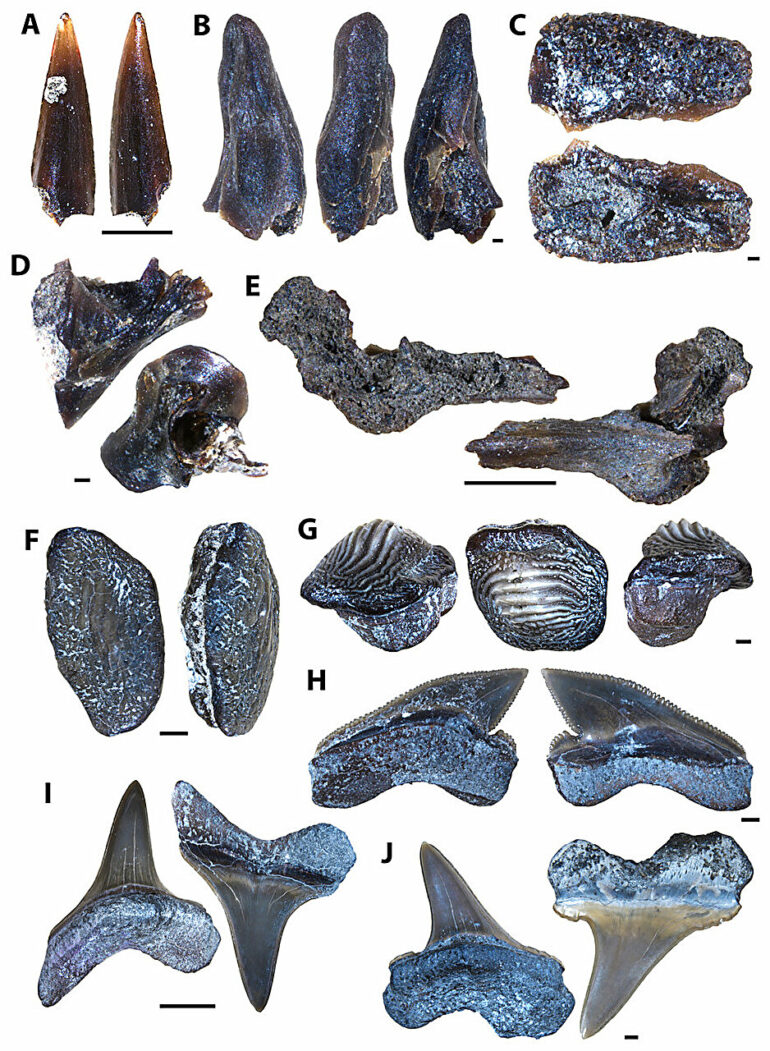Canadian vertebrate paleontologist Aaron Kilmury and a team of researchers from the University of Manitoba have published new research in PeerJ Life and Environment, unveiling the first-ever formal description of microvertebrate fossil assemblages from the late Cenomanian to middle Turonian periods in Manitoba, Canada.
“One of the most significant findings of this study is that the new microvertebrate material described from Manitoba shares several similarities with microvertebrate assemblages collected from other fossil localities of similar age located in central North America,” said Kilmury, a graduate student at Manitoba.
The research, titled “Microvertebrate Faunal Assemblages of the Favel Formation (late Cenomanian-middle Turonian) of Manitoba, Canada,” presents a detailed analysis of thousands of small-bodied fossils extracted from rock samples collected in southwestern Manitoba. Among the findings are numerous fossil remains of fish, sharks, birds, and reptiles, including species of extinct sawfishes, guitarfish, and several yet-to-be-identified species due to incomplete preservation.
The study highlights a fascinating connection between the microvertebrate assemblages in Manitoba and those discovered in other fossil localities of similar age in central North America, specifically South Dakota and Kansas. This remarkable resemblance supports the existence of a three-part vertebrate community zonation for the Late Cretaceous Western Interior Seaway, a pivotal marine environment, during the early to middle Turonian time period. This new insight suggests that during periods of extreme heat, marine communities experienced significant fragmentation and geographic range restrictions, contributing to a complex ecosystem structure.
“Presenting fossil data from Manitoba in this case is significant because Manitoba hosts several historically underrepresented Cretaceous fossil localities which host a wealth of valuable fossil data capable of significantly increasing our understanding of marine biodiversity and biogeography of the Western Interior Seaway,” said Kilmury.
The research was made possible by the generosity of the landowners, who granted access to the fossil sites, and Wayne Buckley and Brian Scott, who provided tours of the fossil sites and made invaluable contributions to museum collections.
“I am especially glad this research is Open Access and will be available to anyone interested in learning more about the fascinating ancient life history of Manitoba and North America,” said Kilmury.
More information:
Microvertebrate faunal assemblages of the Favel Formation (late Cenomanian-middle Turonian) of Manitoba, Canada, PeerJ (2023). peerj.com/articles/15493/
Citation:
Paleontologists discover microvertebrate faunal assemblages in Manitoba, Canada (2023, August 3)



